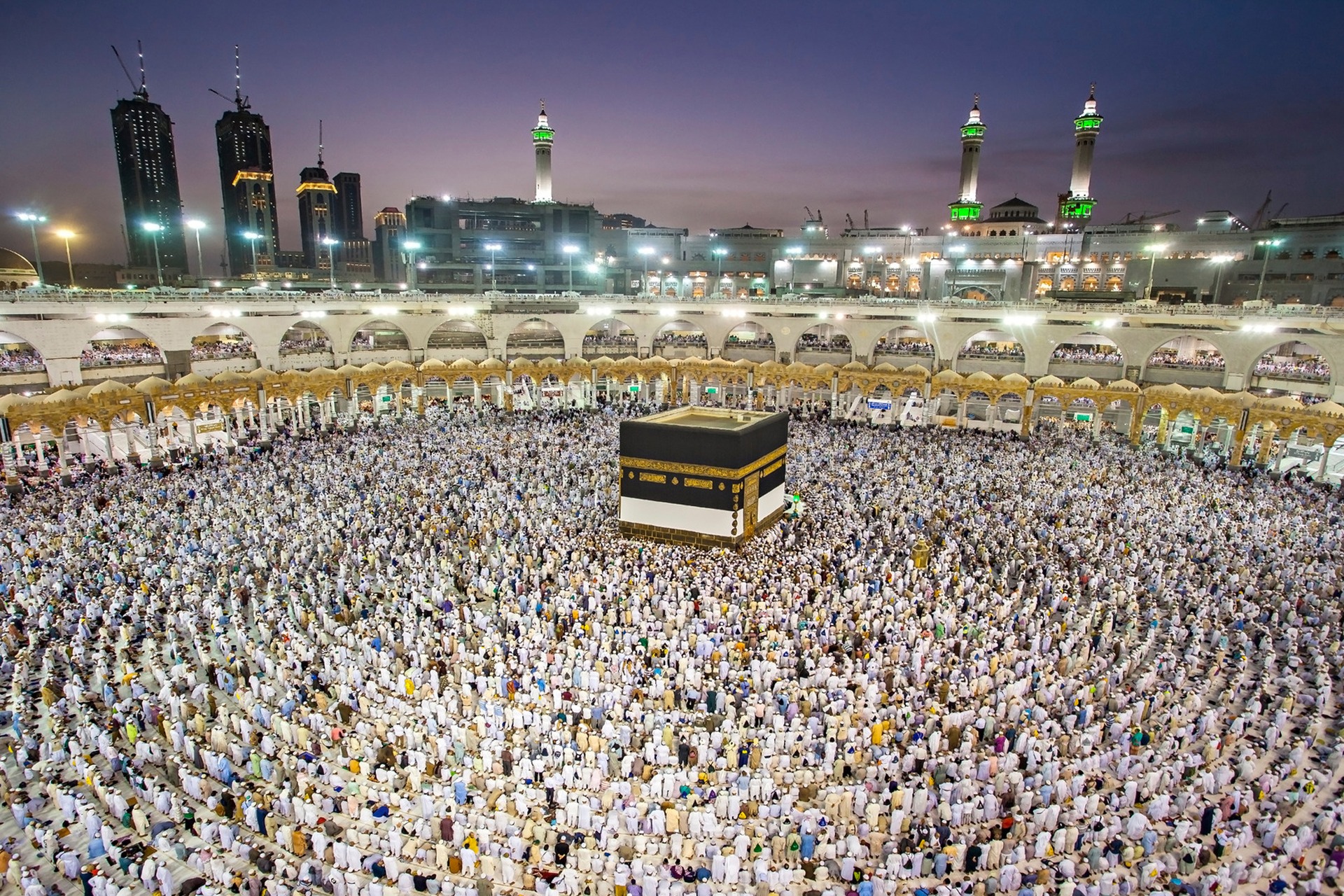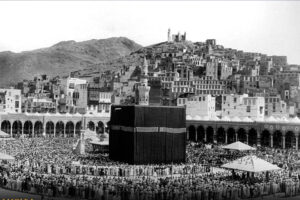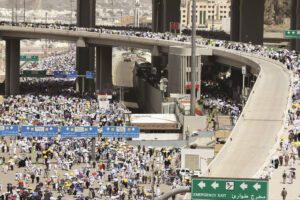Tawaf Around the Ka’bah: A Ritual of Devotion and Unity
The Tawaf around the Ka’bah is one of the greatest rituals of Hajj and Umrah, symbolizing the love of Muslims for Allah and their renewal of the covenant to worship Him alone without partners.
This sacred act is deeply connected to the status of the Ka’bah, the Sacred House of Allah, which was the first house built for worship by Prophet Ibrahim and his son Isma’il, peace be upon them, in obedience to Allah’s command:
📖 “And when Ibrahim raised the foundations of the House, and Isma’il…” (Al-Baqarah: 127)
How to Perform Tawaf
✔ Intention:
- Tawaf begins with renewing the intention in the heart, dedicating it as an act of worship solely for Allah.
✔ Purity:
- The pilgrim must be in a state of full purity (ablution) before starting Tawaf.
✔ Number of Rounds:
- Tawaf consists of seven rounds around the Ka’bah, starting and ending at the Black Stone.
✔ Direction:
- The movement is counterclockwise, keeping the Ka’bah on the left throughout the ritual.
✔ Takbir and Supplication:
- Tawaf begins by kissing or pointing towards the Black Stone while saying “Allahu Akbar” (God is the Greatest).
- During Tawaf, any supplications (prescribed or personal) can be made, along with frequent remembrance and glorification of Allah.
✔ The Yemeni Corner:
- When passing the Yemeni Corner, it is recommended to touch it (if possible) but without kissing it.
- Between the Yemeni Corner and the Black Stone, pilgrims recite:
“Our Lord, grant us good in this world and good in the Hereafter, and protect us from the punishment of the Fire.”
✔ Prayer After Tawaf:
- After completing Tawaf, it is recommended to pray two Rak’ahs behind Maqam Ibrahim, following the practice of the Prophet ﷺ.
- In the first Rak’ah, Surah Al-Kafirun is recited, and in the second Rak’ah, Surah Al-Ikhlas is recited.
The Timing and Order of Tawaf in Hajj and Umrah
🔹 Tawaf al-Qudum:
- Performed upon entering Mecca for the first time.
- It is Sunnah for those performing individual (Ifrad) or combined (Qiran) pilgrimage.
🔹 Tawaf al-Ifadah:
- Performed after stoning the major Jamarat on the Day of Sacrifice (10th of Dhu al-Hijjah).
- It is an essential pillar of Hajj, without which Hajj is incomplete.
🔹 Tawaf al-Wada (Farewell Tawaf):
- Performed after completing the rituals of Hajj, before leaving Mecca.
- It is obligatory for every pilgrim except menstruating or postnatal women.
🔹 Tawaf of Umrah:
- Performed immediately upon reaching Mecca after entering the state of Ihram for Umrah.
📌 In Hajj:
- Tawaf al-Ifadah follows stoning the major Jamarat, slaughtering the sacrifice, and shaving or trimming the hair.
📌 In Umrah:
- Tawaf is the first pillar after Ihram, followed by Sa’i between Safa and Marwah.
The Wisdom Behind Tawaf
📌 Unity Among Muslims:
- Tawaf reflects the unity of the Muslim Ummah, as Muslims from different backgrounds circle the Ka’bah in harmonized devotion.
📌 Declaration of Monotheism:
- Tawaf serves as a renewal of the covenant with Allah, reaffirming pure worship and complete submission to Him alone.
📌 Spiritual Connection:
- The closeness to Allah felt during Tawaf deepens faith and spirituality, making it a profound act of devotion.
📌 The Status of the Ka’bah in the Hearts of Muslims:
- Allah has made the Ka’bah a place of safety and tranquility, fulfilling Prophet Ibrahim’s supplication:
📖 “And make the hearts of people incline toward them.” (Ibrahim: 37)
- Souls never grow tired of visiting it; instead, their love for the Ka’bah increases with each visit.
The Significance of Tawaf in Hajj and Umrah
📖 The Prophet ﷺ said:
“Hajj is Arafat and the Tawaf of the House.” (Narrated by Tirmidhi)
Thus, Tawaf is not just a ritual—it is a powerful symbol of devotion, a manifestation of servitude, and a reminder of the unity and solidarity of Muslims worldwide.
This version organizes the content in a clear, engaging, and structured manner while emphasizing key points for better understanding. Let me know if you need further refinements!







